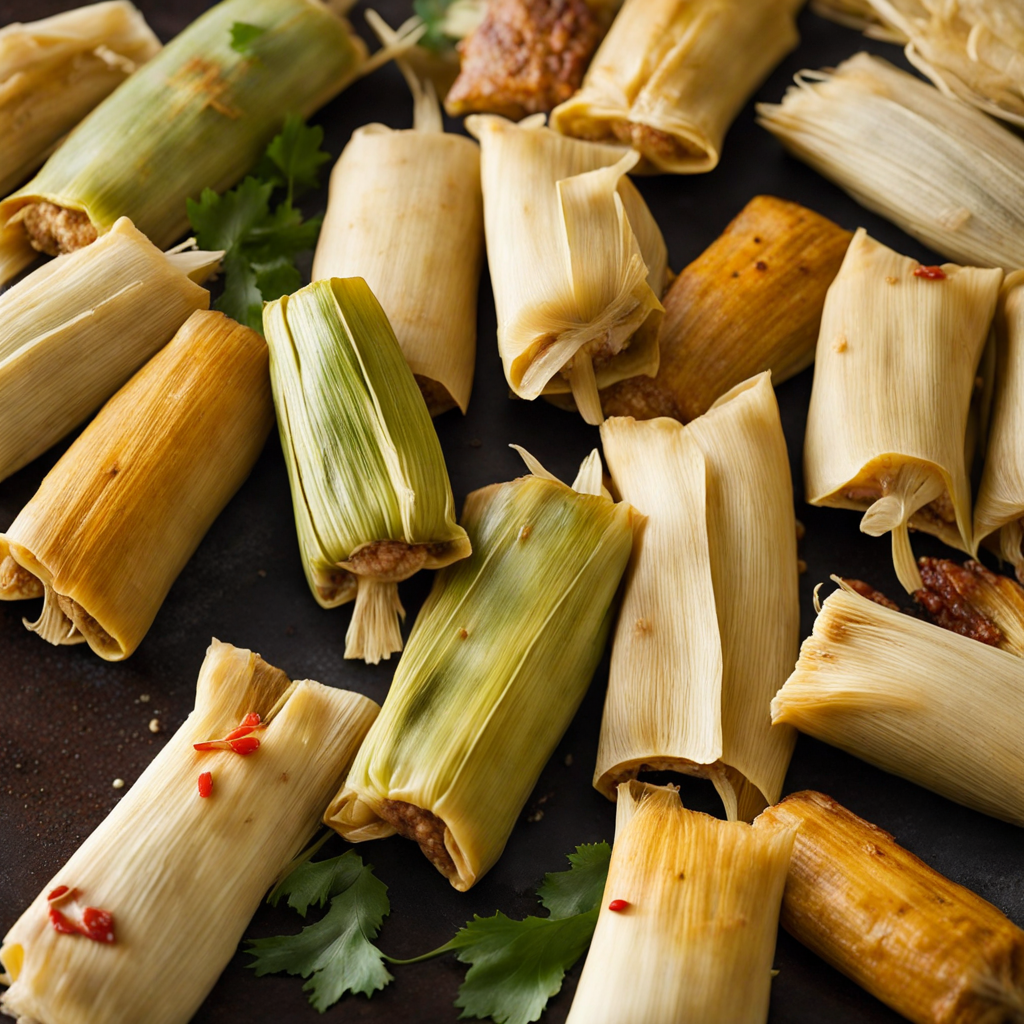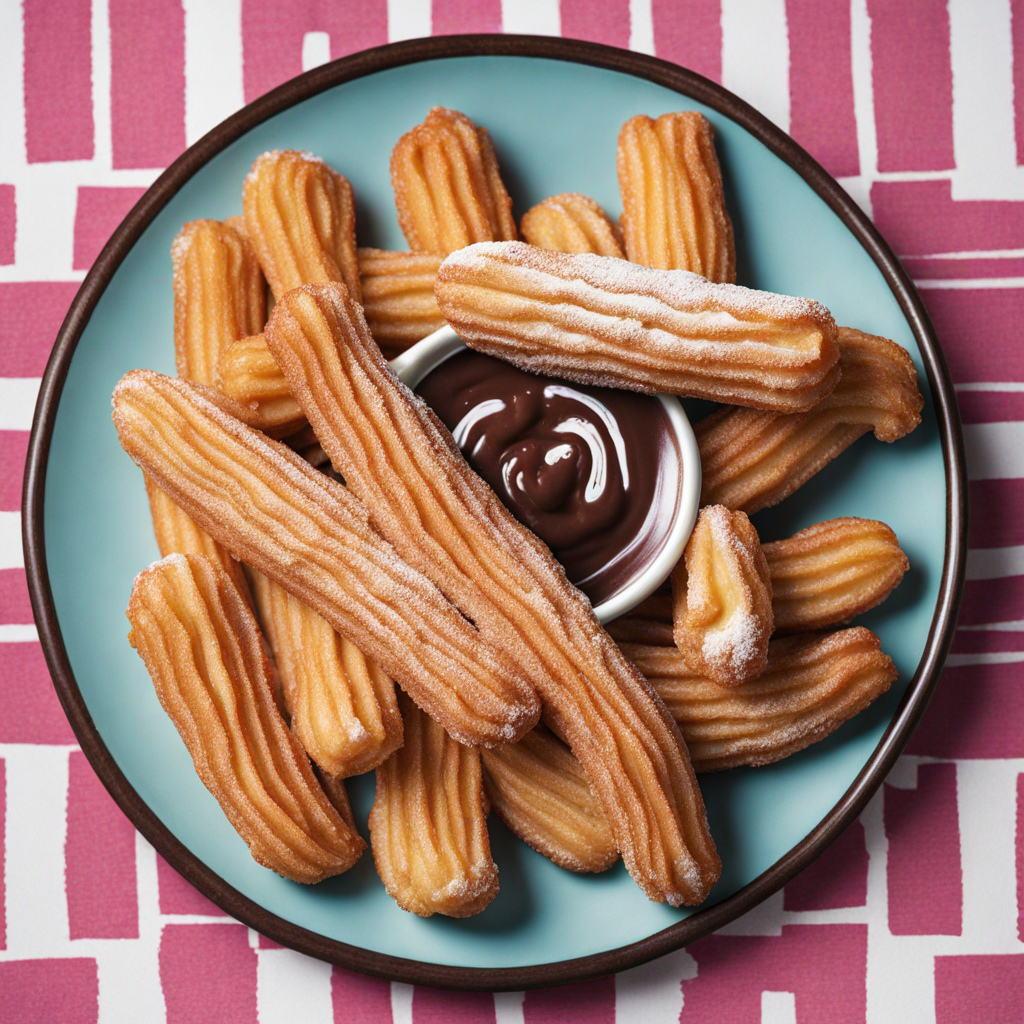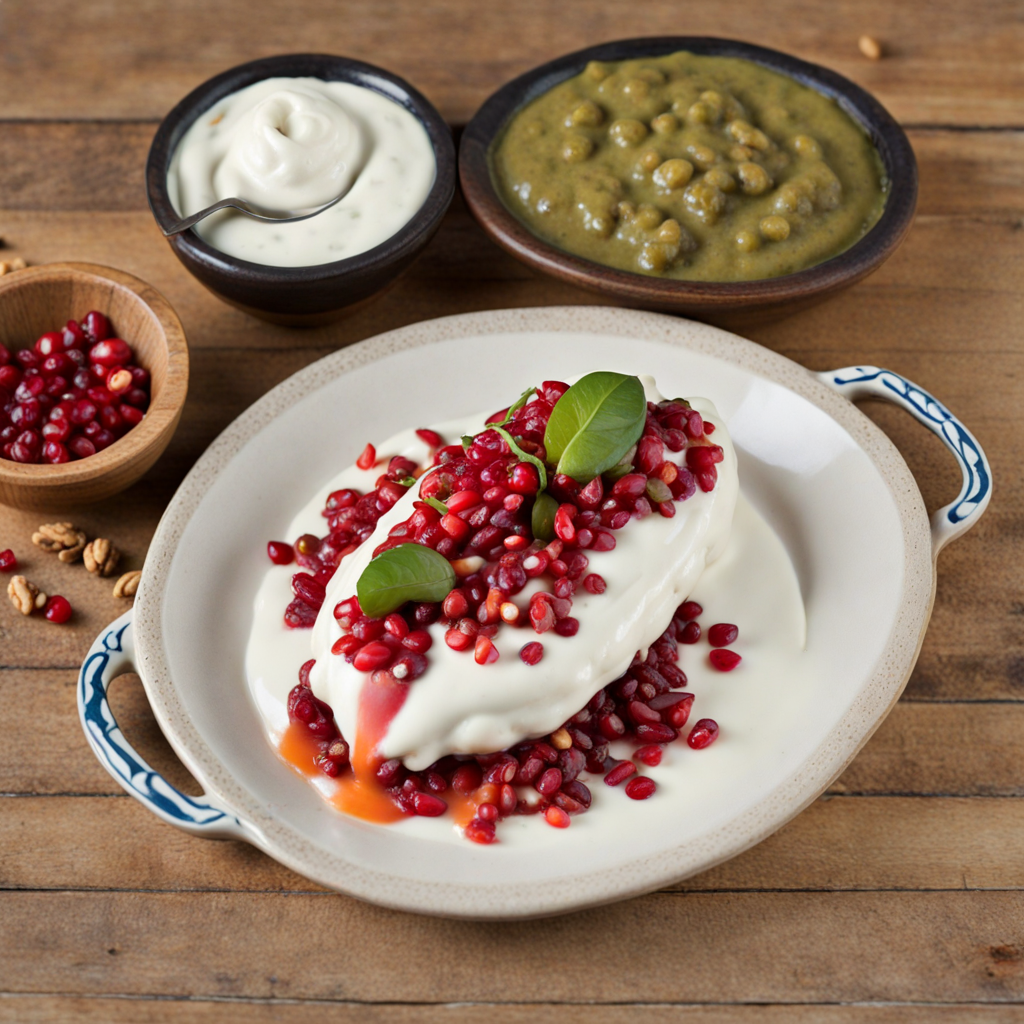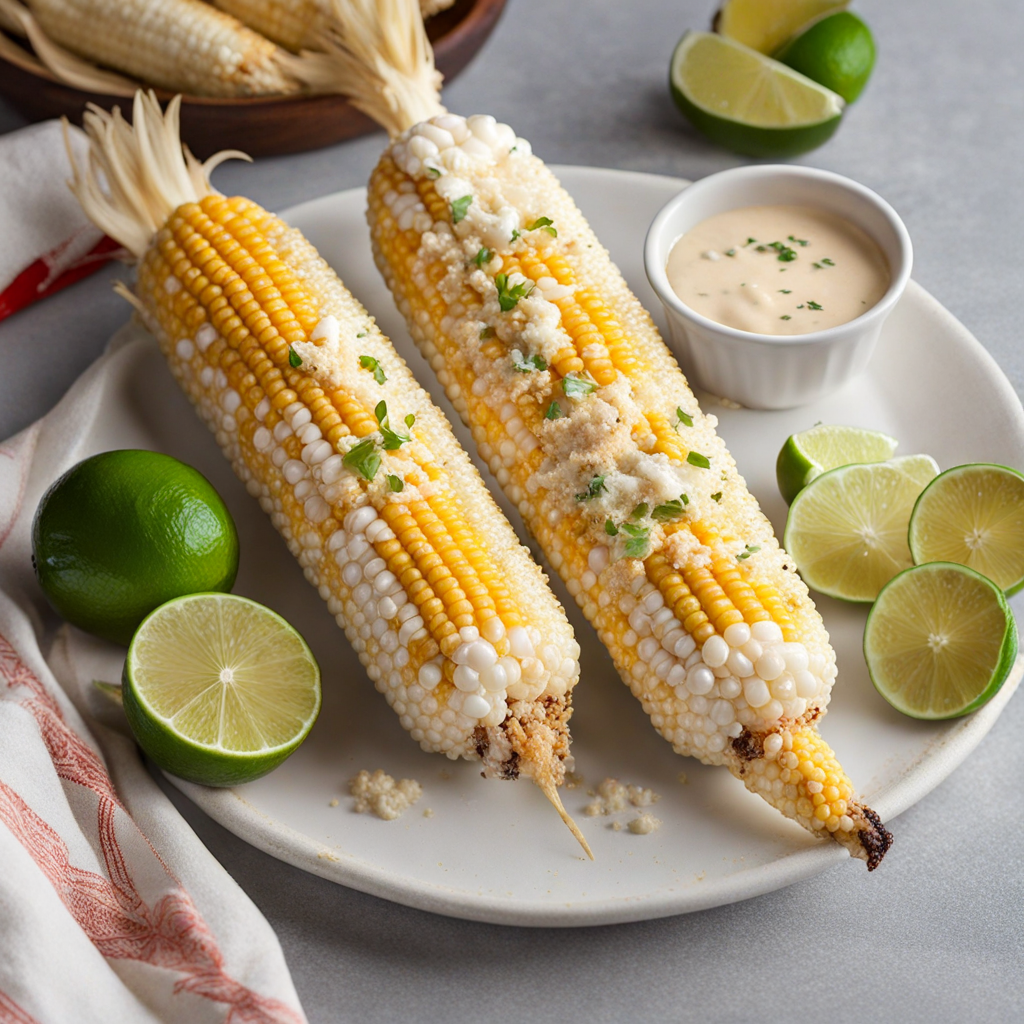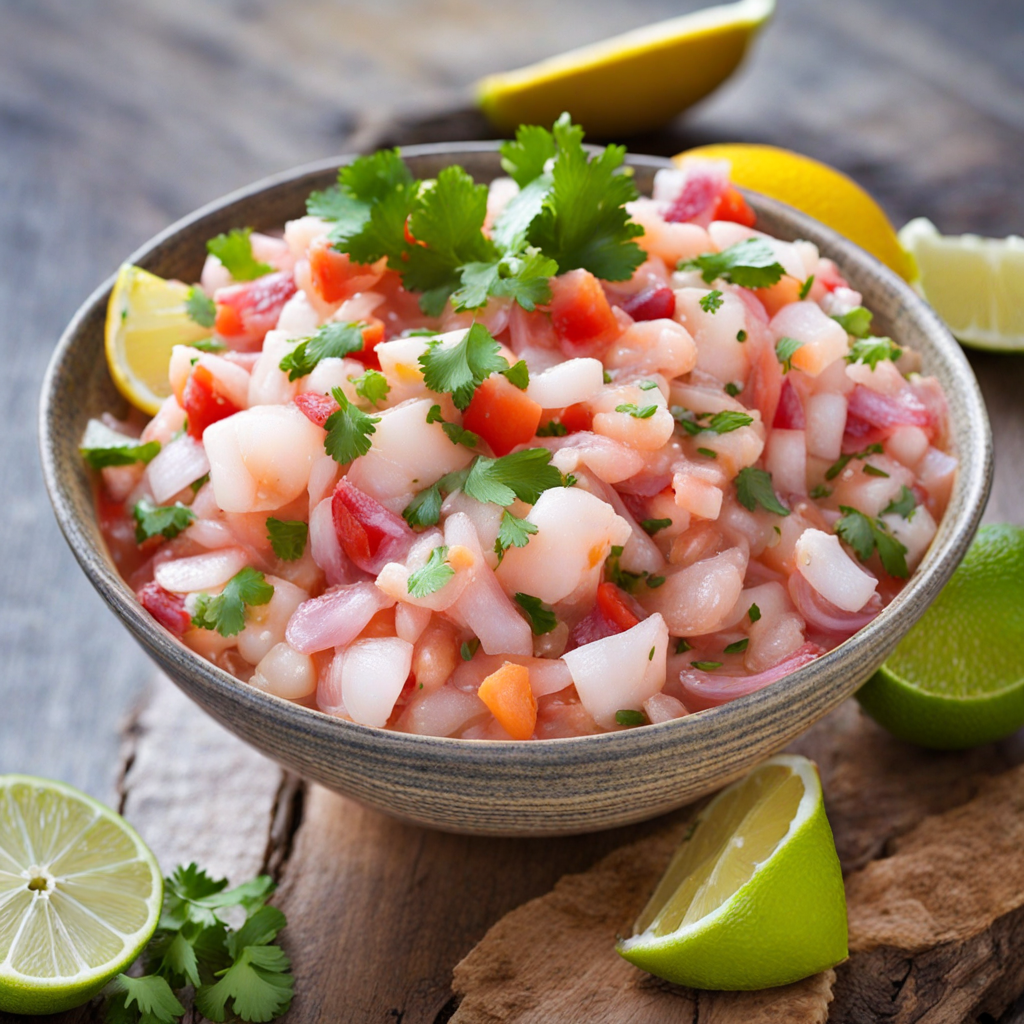Tamales
Tamales are a traditional Mexican dish that showcases the rich culinary heritage of the country. These delightful parcels are made from masa, a dough made from nixtamalized corn, which is often enriched with lard or vegetable shortening to create a buttery, tender texture. The masa is spread onto a corn husk or banana leaf, filled with a variety of savory or sweet fillings, and then folded and steamed to perfection. The steaming process helps to infuse the flavors, making each tamale a little package of warmth and taste, ready to be unwrapped and enjoyed. The fillings for tamales can vary widely, reflecting the diverse regional ingredients and culinary traditions of Mexico. Common savory fillings include shredded meats like pork, chicken, or beef, which are often seasoned with bold spices and salsas. Vegetarian options might include roasted vegetables, cheeses, or beans, while sweet tamales might be filled with fruits like pineapple or raisins and flavored with cinnamon and sugar. This versatility allows tamales to be served for breakfast, lunch, or dinner, and they are often accompanied by salsas, guacamole, or crema for an added burst of flavor. Tamales are not just a meal; they are a cultural experience that often brings families and friends together, especially during celebrations and holidays. The process of making tamales can be a communal activity, with people gathering to prepare the masa, choose fillings, and wrap the tamales in husks. This tradition adds an extra layer of meaning to the dish, making each bite a connection to family history and culinary customs. Whether enjoyed at a festive gathering or as a comforting weeknight meal, tamales offer a taste of Mexico that is both satisfying and rich in cultural significance.
How It Became This Dish
The History of Tamales: A Culinary Treasure of Mexico Tamales, those delightful parcels of masa (corn dough) wrapped around a variety of fillings and steamed in corn husks or banana leaves, are a cherished culinary staple in Mexico and throughout Latin America. Their origins, rich cultural significance, and evolution over time tell a fascinating story of tradition, community, and adaptability. #### Origins: Ancient Beginnings The history of tamales can be traced back thousands of years to the ancient civilizations of Mesoamerica. Archaeological evidence suggests that tamales were consumed as early as 5000 B.C. by the Olmecs, one of the region's earliest known civilizations. The Aztecs and Mayans later adopted and refined this food, incorporating it into their diets as a portable and nutritious meal. Tamales were not merely food; they were also a significant part of social and religious ceremonies. The Aztecs, for instance, believed that tamales had divine origins, associating them with the gods. They were often used as offerings in rituals and were prepared for important events, including weddings and religious festivals. The portability of tamales made them ideal for warriors and travelers, who could carry them easily during long journeys. #### Cultural Significance: A Symbol of Community Tamales hold profound cultural significance in Mexican society. They are often associated with family gatherings and festive occasions. The act of making tamales is a communal activity, bringing together family members to share in the preparation process, which is known as "tamale-making parties" or "tamaladas." Traditionally, these gatherings involve multiple generations, allowing the transfer of recipes and techniques from elders to younger family members. The versatility of tamales reflects the diverse culinary landscape of Mexico. While the basic recipe of masa remains consistent, the fillings can vary widely based on regional ingredients, cultural influences, and personal preferences. From savory to sweet, tamales can be filled with meats, cheeses, vegetables, fruits, and even chocolates. This adaptability showcases the creativity of Mexican cuisine and its ability to incorporate local flavors and traditions. #### Development Over Time: A Culinary Evolution As Mexico underwent significant changes through colonization and globalization, so too did tamales evolve. The Spanish colonization in the 16th century introduced new ingredients, such as pork, chicken, and various spices, which were incorporated into traditional recipes. The blending of indigenous and Spanish culinary traditions gave rise to new varieties of tamales, enriching their flavors and textures. Regional differences in tamales became more pronounced over time. For instance, in the northern states of Mexico, tamales are often larger and filled with ingredients such as beef and cheese, while in the south, smaller, spicier tamales with chicken or vegetable fillings are common. In Oaxaca, the use of banana leaves instead of corn husks to wrap tamales became a signature feature, imparting a distinct flavor to the dish. In the United States, particularly in areas with significant Mexican populations, tamales gained popularity in the 19th and 20th centuries. They became a staple in American-Mexican cuisine, particularly during the holiday season, where families would gather to make and share tamales as a celebration of culture and heritage. The introduction of tamales into mainstream American culture has also led to the development of fusion varieties, with creative fillings such as barbecue or jalapeño cheddar. #### Modern Day: A Culinary Icon Today, tamales are more than just a traditional food; they are a symbol of Mexican identity and pride. They are commonly served during holidays and special occasions, particularly around Christmas and Día de los Muertos (Day of the Dead), where they are often included as part of the altars honoring deceased loved ones. In contemporary Mexican cuisine, tamales have found their way into gourmet menus and food trucks, showcasing their enduring appeal and versatility. The rise of culinary tourism has also contributed to the resurgence of tamales in recent years. Travelers to Mexico seek out authentic experiences, and tamales are often at the forefront of these culinary adventures. Street vendors, markets, and local restaurants proudly serve traditional tamales, allowing visitors to connect with the culture through food. #### Conclusion: A Timeless Tradition The history of tamales is a captivating journey through time, illustrating the resilience and adaptability of a beloved dish. From their ancient origins to their modern-day prominence, tamales embody the rich tapestry of Mexican culture. They are a testament to the importance of community, tradition, and the joy of sharing food with loved ones. As we enjoy tamales today, we partake in a culinary tradition that has survived the test of time, bridging generations and cultures through its flavors and stories. Whether filled with savory meats, zesty salsas, or sweet treats, tamales continue to nourish not just the body, but also the spirit of togetherness and cultural pride that defines Mexican heritage.
You may like
Discover local flavors from Mexico



